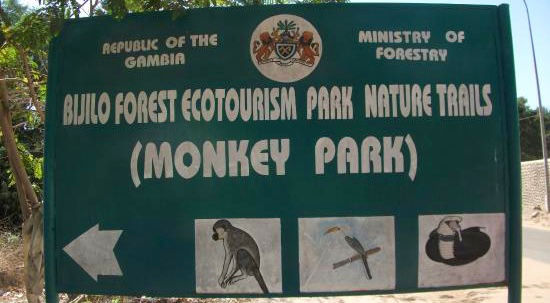Dr Armstrong writes to the American Mission in Banjul about proposed embassy at Monkey Park
- Gunjuronline.com

- Nov 8, 2022
- 2 min read
Dr Roy Armstrong writes to the American deputy chief of Mission in Banjul about their proposed embassy in the famous Monkey Park.

As the debate on the proposed state of the art new American Embassy at the famous Monkey Park in Bijio festers, Dr Roy Armstrong of Project Wild Gambia has written to the American Mission in Banjul, urging a "full assessment of the impacts and a suitable mitigation strategy being agreed upon before any work could commence. " at the proposed new embassy site.
Below, we reproduce verbatim, Dr Armstrong's letter addressed to the Deputy Chief of Mission Eric Mehler:
Dear Eric (and thank you Mr. Manjang for the introduction).
I'm sorry to say that my trip this month has been postponed due to other commitments but the research will be handled by our colleagues at the University of The Gambia in my absence. However, I'd be very happy to discuss matters with your team via Teams, Zoom, etc.
As Mr. Manjang has already mentioned, we have been involved in research in Bijilo forest park for many years and have a research/conservation interest in Temminck's red colobus monkeys (TRC). Indeed, with my former colleague Dr. Mic Mayhew, I co-wrote the Gambian strategy for this species as part of the IUCN's global emergency action plan for red colobus monkeys. TRC is one of 3 species that were formerly considered 1 ("Western red colobus"). One of the 3 species was the only primate taxon to go globally extinct in the 20th Century. The other 2 have the same problems and their existence on the planet is very precarious. Habitat loss and fragmentation have been identified as the main drivers in their decline.
The ITC grounds are used daily by the colobus population based in the Bijilo forest. I'm afraid I am not familiar with US laws, but in the EU this would lead to the site being considered "functionally linked" to a protected area and that any development should be assessed as if it was occurring in the protected area. This would require a full assessment of the impacts and a suitable mitigation strategy being agreed upon before any work could commence.
The Gambia has a poor record when it comes to the management and protection of gazetted areas. Bijilo forest is a prime example. I trust that the US mission would seek to operate to higher standards more in line with US and EU levels.
The development of the ITC site offers opportunities for TRC conservation. For example, the provision of drinking sites for monkeys from Bijilo forest park would be beneficial, especially for lactating females which struggle to produce milk as a result of climate change (https://pb.copernicus.org/articles/2/21/2015/). The landscaping of the site could include trees that (through our research) we know to be important to TRC, especially at the end of the dry season. The grounds could offer an undisturbed site (away from the public eye) where we could treat diseased monkeys (https://www.biorxiv.org/content/biorxiv/early/2017/05/10/135491.full.pdf).
We would be happy to contribute all we know of TRC towards an effective management plan for the site and could suggest further mitigation measures for this population if they were considered necessary.
Best wishes,
Dr. Roy Armstrong
Head of Research
Project Wild Gambia (www.projectwildgambia.com)




Comments